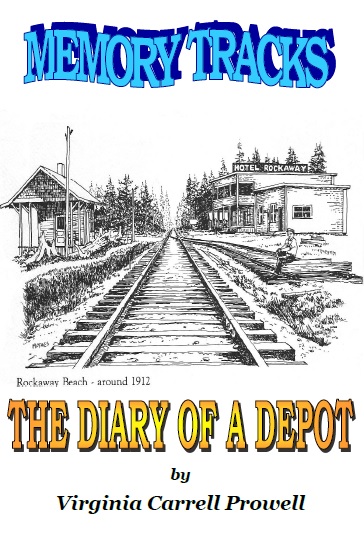EDITOR’S NOTE: A familiar name to Pioneer readers, Virginia Prowell has shared her delightful poems with us for the last few years. Recently, Don Best shared a copy of Virginia’s book “Memory Tracks: The Diary of a Depot”. First published in 1994 with a 2nd edition in 2007, the book tells the story of the Rockaway Beach Train Depot from the building’s perspective. As Virginia herself explains, “If those walls could talk …” So she gave them a voice.
We will publish Virginia’s book as a series, with a chapter every few days, including the historical photos.
Enjoy this historical recollection of an iconic Rockaway Beach building.

By Virginia Carrell Prowell
As Rockaway grew, entrepreneurs of every description opened their doors in hopes of making their fortune. An enterprising lady by the name of Mrs. Baldreck made a delicious clam chowder that she called ‘Tang of the Sea’. The aroma would fill the air and when the wind was just right it permeated my otherwise musty smelling walls. Her fame was widespread and she even canned her chowder and shipped it out on my trains. Of course there was the candy store that featured salt water taffy. Most every passenger that left Rockaway had a bag of taffy to eat on the journey home.
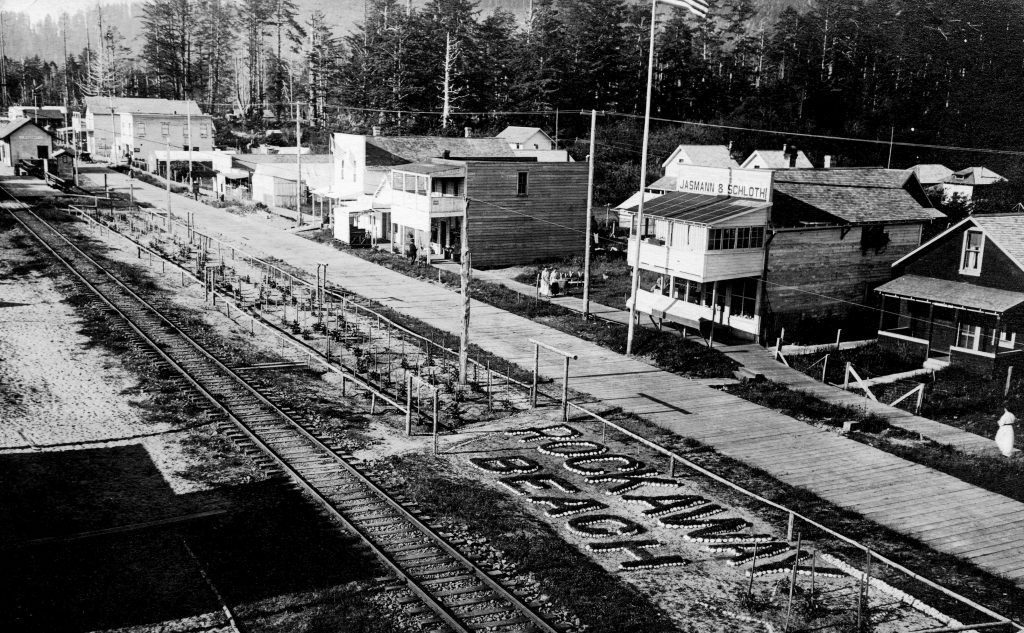
The town was proud of its popularity and adorned the park area with flowers. Just south of me was a beautiful Dahlia garden. Flowers really flourished in this salt air. They also fashioned a sign in the park grounds reading “ROCKAWAY BEACH”.
Education was not forgotten in this remote area either. One of the teachers was Miss Doris Painton. Her grandfather had the Saltair Hotel for a time so her mother came down to cook for the boarders who were mill workers at Watseco. Doris was teaching in Eastern Oregon but since her folks were at the beach, she moved here and taught the primary grades.
She and her sisters, Jane and Martha, and Martha’s friend, Helen Craig, came daily in the summer to meet the train, get the mail and talk to friends. I overheard a lot of their chit chat. Doris and Martha’s mother loved to entertain the young people. She had many parties including a Mock Wedding, Halloween, Slumber parties or anything that would get them together for some fun. Before they left town, she gave a farewell party for the two remaining children still at home. She had a ‘Hick Wedding’ at Mrs. Post’s Hotel which was just across the street from me. Inviting all the neighborhood kids, she told them to dress their hickiest and bring a hick present. Everyone was given a name. You wouldn’t believe the assortment of gifts: an onion, an old corset, a baby bottle, and a battered teaspoon wrapped from Tiffany’s. One boy had no costume, so Mrs. Post found an old black lace dress for him to wear and declared him ‘Mother of the Bride’. One of the girls wore a lace curtain and played the bride. The ceremony was read from the Sears Robuck Catalog.
Doris Painton married Harley Wingrove whom she met at the dance hall. Harley lived in Rose Cottages be-hind the dance hall with his grandmother and sister, Dolly, so after the wedding, they too moved into one of the cottages until they could build a house of their own.
In 1925, the Natatorium was completed just south and west of my structure. It was a massive structure, two stories tall and about two blocks long. Water from the sea was pumped in and heated for the pool. Vacationers loved the heated swimming pool because so many days the cold water of the Pacific made swimming unbearable. My view of the Pacific was now blocked to the south but I could still see the crashing ocean waves and a good bit of activity on the beach.
From my vantage point, I observed many a bathing beauty contest. It was fun to watch the change of garments that took place over the years. The first women bathers wore long stockings, blouses and skirts and al-ways a hat on their heads. Over the years, they gradually discarded the stockings, hats and long sleeve blouses but still had the skirts and sleeveless tops. By 1925, most of the women were wearing the Jantzen knitted swim suits.
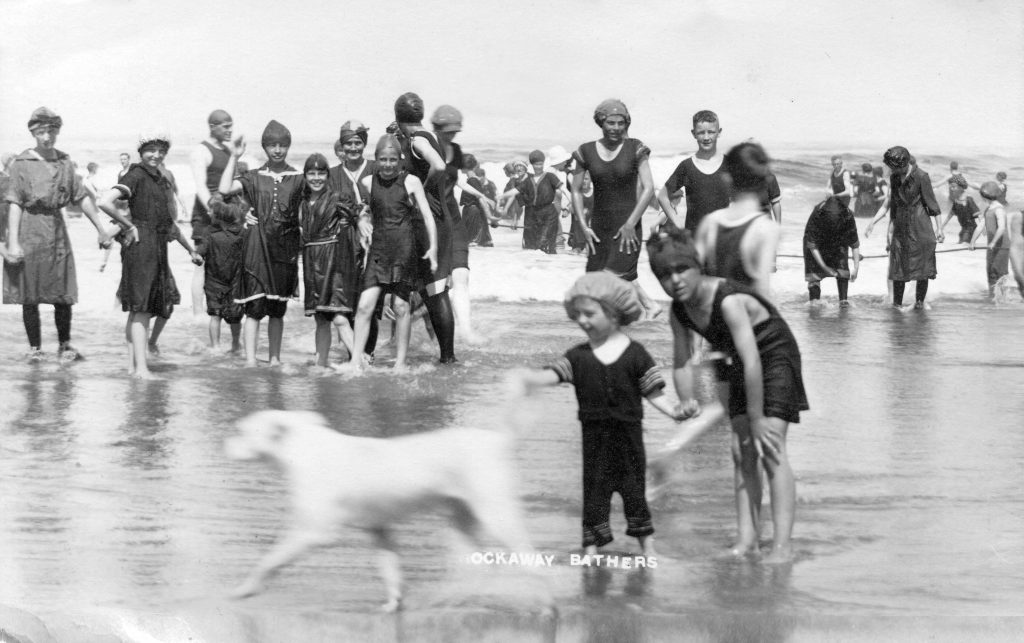
One bathing beauty contest was hilarious. After all the contestants paraded across the beach, sounds of snickering, gasping and laughter erupted from the audience. A blackened woman, wearing a man’s full length suit followed the bathing beauties onto the beach. Wouldn’t you know, although her identity wasn’t discovered until years later, it was the fun loving Mrs. Alice Painton.
Ben Howell, a red-faced Irishman, was the depot agent in 1922. He was a good agent and kept things running pretty smoothly but he had a thirst for the prohibitive white lightning. When the train came in, the baggage man always had a package for him. It was a large Kodak camera case, innocent enough looking, but the contents were Ben’s supply of his favorite hootch from Wheeler.
Don Sutherland and his good buddy, Arthur Welch, were two teenagers that hung around the station. Don al-ways was ready to carry baggage for the passengers or split kindling for the depot agent or anyone that had a job for him. The twenty five cents he got for his work was like a gold mine to him and the other young fellows. Be-sides Don and Arthur, there was Clarence Anderson, Art and Floyd Shafer, George McNamara and Louie Best.
One day Don and Arthur decided they would investigate the passenger trains that were parked at the Lake Lytle side track for the weekend. Their curiosity ended quickly when the railroad detective who was watching over the cars spotted them.
“What are you fellows doing here?” came the deep voice of the detective. The boys were terrified. “What’s your name?” asked the detective.
Arthur stuttered a minute and then said, “It’s Don Sutherland!” turning to Don, he asked, “And what’s your name Lad.”
Don thought a minute and blurted out, “Arthur Welch, sir.”
The detective wrote their names down and the boys scampered off the cars and ran for all they were worth towards home.
Ben delighted in playing practical jokes on the young fellows that played around the depot. There was quite a gathering in the evenings around the semaphore. The kids liked to climb up the ladder of the signal pole and I guess it annoyed old Ben so he’d wire it to the batteries that ran the telegraph machine. When the boys would try to climb it, they’d literally get the shock of their lives.
Of course there was always activity of some sort going on around the depot with so many people gathering to wait but one of the strangest things that entertained the passengers was an old dog named, Bear. He was a big wooly yellow colored mutt that loved to fetch rocks. The unusual thing about it was he would go completely under the water to retrieve them. While he was under water, he would growl and make all kinds of strange noises, then come up with a bolder size rock to the delight of the throngs of people on the platform.
By 1925, this area was really on a roll. The trains had to put on extra cars to accommodate all the passengers, especially on holidays. The Fourth of July was a big event with parades, games and fireworks. All the rooming houses, tents and hotels were overflowing. Some people even rented out the bedrooms of their children and made the children sleep elsewhere.
Beautiful weather greeted the crowds that flocked to the beach on the Labor Day weekend in 1925.
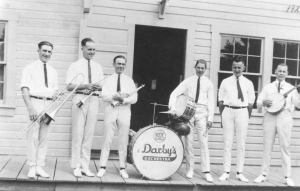
The popular orchestra led by Bill Darby was playing at the dance hall. The town was filled to over-capacity and my wooden platform at the west side was crowded with masses of people the entire weekend. Bill and a few of his band came down and welcomed the passengers, belting out some real toe-tapping jazz tunes as only he could do. When the weekend was over and the last thunderous footstep left my platform onto the train, when the last “all aboard” was sounded, and the trains made their clickity clack way down the track, it almost seemed like a ghost town. The regulars of the town give a big sigh of relief but looked forward to the next summer.
During the winter, freight trains still stopped daily to deliver merchandise for the stores and to townsfolk. At times this was not a routine activity because winter months meant storms and high water. My location at the mouth of Rockaway Creek made me vulnerable to high tides that would sweep up the creek, causing foam and swirling water to surround my platform. Hip boots, rain slickers, and sou’wester hats were the garb of the season when this occurred. The freight had to be delivered the same as the mail, through rain, sleet, snow or high water.
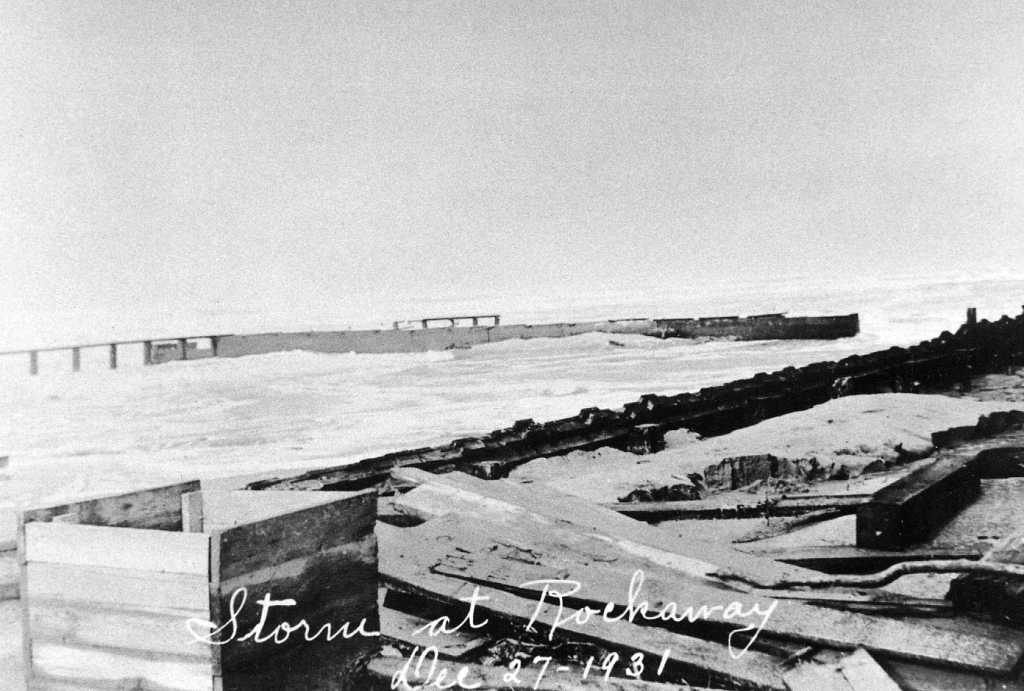
Most of the time, freight to the stores was on time but occasionally there were slides over the tracks and freight as well as the mail would be delayed. This was taken as a matter of fact and didn’t usually stir up too much fuss except for the time a shipment of smelt was to be delivered in the spring of the year. It was a day late, came in on Saturday instead of Friday and the butcher wouldn’t accept it. Not knowing what else to do with it, the agent set the entire box out on the bank of the creek for the sea gulls to feast upon. That was his intention, at least. The townsfolk, however, beat the gulls to it and most everyone had a feast of smelt and the poor butcher not only didn’t get the profit from the fish, he also lost business that day.
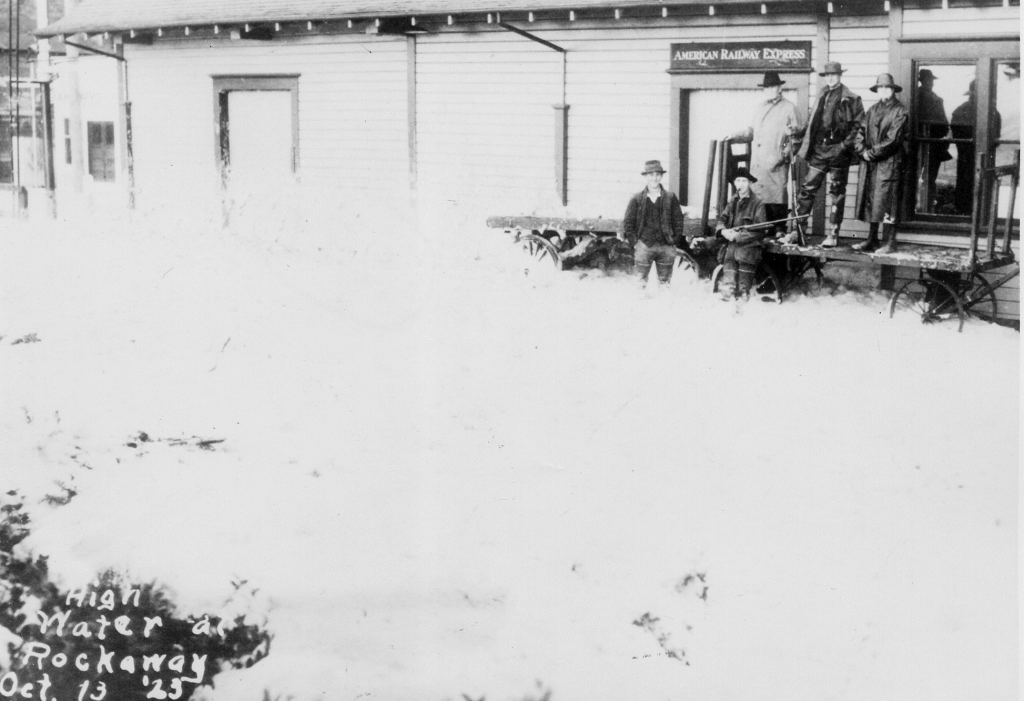
Foam generated from the storm at sea, October 13, 1923.
Along with the building boom, roads to the north were also being completed. The road to Wheeler replaced the old plank road that had run between Wheeler and Brighton. People could also drive from here to Hillsboro and Portland but I knew that would never catch on. Trains are the best mode of travel, comfortable, fast and no stress on family or driver. Youngsters get a big thrill out of the trains too. There is something about the clickity clack of the wheels as they pass over the rails and the whooo, whooo that brings out the adventurous spirit in everyone.
There is talk around about a new highway over the Wilson River, but from what I hear, that is really rough terrain. It’s unlikely they could ever manage to get cars over those mountains. A few people drive through McMinnville, down to Hebo, through Tillamook and then on to Garibaldi. The final stretch of plank road to here is really a challenge. I’ve heard some people have had to make a couple of passes to get over some of the muddy roads. I don’t know why they attempt such dangerous maneuvers when the train is available.
Prohibition was the law in these days, but that didn’t stop the consumption of alcohol. Bootleggers were prevalent around the area and supplied the locals as well as the visitors. One of the more infamous was a redheaded lady by the name of “Ruby” who ran the pool hall just across the street from me. That place was always busy and at times a little noisy, but I didn’t mind, it was exciting.
Rockaway was a center for fun and excitement. Every crack in my structure overheard all the conversations of the local men when they picked up the papers and the freight.
In 1928, there was a lot of talk and arguments about the presidential election. There was a fellow by the name of Al Smith running on the Democratic ticket and then another man, Herbert Hoover running on the Republican side. At times the arguments really got hot and heavy. Prohibition arguments were always heated too. One fel-low was hopping’ mad when he read that Congress had appropriated $32,000,000 to enforce prohibition. Others were all in favor of it and the arguments went on and on.
November of 1928, Herbert Hoover was elected. He had promised “a car in every garage and a chicken in every pot.”
Some people were jumping with excitement and others were predicting doom and gloom. From my stand-point, I couldn’t see what difference it would make, I would still be here welcoming passengers and receiving freight. This town and the railroad are here to stay. It wasn’t too long before this, they had announced over the radio that the U.S. has more than 265,000 miles of Rail-road tracks. That made me feel really important to know that I was a part of such a vast system spanning this country.
Black Friday, October 29, 1929 was the collapse that the doom and gloom predictors had been dreading. The news of the stock market crash spread over the country like a dark cloud. Jobs were getting more scarce all the time and now this. The next spring, there were fewer people on the trains, but there were still many who came and the dance hall was always the big drawing card. It seemed that more automobiles were arriving. They have even built a big service station down on Owens Avenue, built to look like a large windmill. The highways are being improved all the time. The talk about the Wilson River Highway may become a reality after all.
The motel and cottage owners became very competitive. When the trains rolled in, several of the more aggressive owners would be right there to greet the passengers to persuade them to stay at their establishments. There was one lady in particular by the name of Queenie who had cottages just to the north of me. She usually went away from the depot with as many passengers as her cottages could hold.
On the Fourth of July and all the holidays, the streets were more and more crowded with automobiles. People seem to be in love with the idea of owning their own autos these days. I’ve noticed that some delivery wagons have come to town. It seems to me that people would be better off financially if they shipped and traveled by rail, rather than go to all that expense of driving their own cars and delivery wagons clear from Portland.
Norman Johnson, one of the track walkers, would go all the way to Foss, checking the tracks for any breaking up or any debris or fallen trees. Not many passengers realized there was such an individual looking out for their safety. When he found a break or any danger, he’d put up a red flag, then he’d phone the depot or if there was a section gang near, he’d let them know. Keeping the tracks in good condition was a full-time job and there were a couple of section gangs between here and Foss and on up to Wakefield. From that point on, the section gangs from Hillsboro took over.
This spirited bunch of railroad workers were nick-named “the Gandy Dancers.” When they came to town, the bootlegger usually got some extra business. Of course, like most everyone else, the dance hall was one of their favorite haunts.
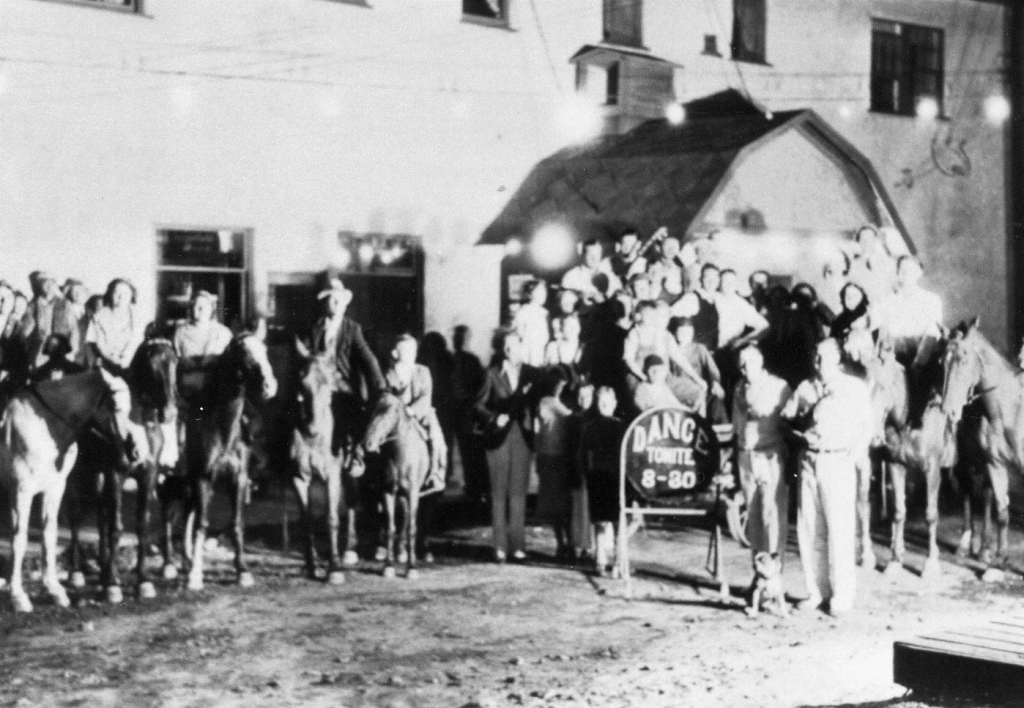
Rockaway Dance hall
Here’s a link to the introduction and Chapter 1 – https://www.tillamookcountypioneer.net/memory-tracks-the-diary-of-a-depot-introduction-chapter-1/
https://www.tillamookcountypioneer.net/memory-tracks-the-diary-of-a-depot-introduction-chapter-1/https://www.tillamookcountypioneer.net/memory-tracks-the-diary-of-a-depot-introduction-chapter-1/

